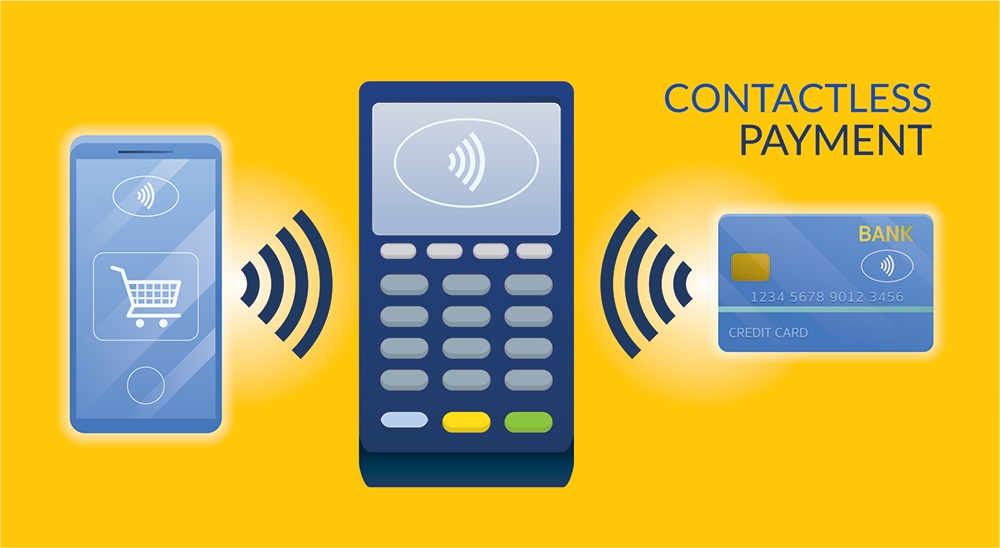COVID-19 is changing the way we work, live, and play.
Across our country, people are adjusting to a different way of living and working.
Businesses are also adapting to new realities and technologies that impact our businesses and lives.
The following are some of those new technologies.
Post COVID-19:
5 Changing Business Technologies for The Better
1. Remote Working Technologies

More workers are now working from home than ever before in the history of mankind. This isn’t likely to be a trend that will reverse itself anytime soon. If anything, companies are rapidly discovering that not only are their employees happier about this new arrangement, they are more productive as well.
While working from home won’t work for every business, those that can work from home have been forced by the pandemic to implement new work from home technologies and processes.
Virtual communication and collaboration technologies, such as Zoom, Microsoft Teams, and Slack have exploded. As the pandemic drags on in many regions and urban areas, much of the stigma with working from home has completely vanished. For many employees who have this arrangement, it’s a good thing.
However, this headlong jump into remote working has caught many companies, and their IT departments, unprepared.
Many businesses have had to scramble to cobble together an effective work from home strategy along with the information technology (IT) support necessary to mobilize such strategies. As a result, companies big and small are experimenting with new IT technologies.
Top Remote Working Tech Trends
In order to establish a strong work from the home team, you’ll need the right technologies.
- Seamless video conferencing.The COVID-19 pandemic brought a litany of remote-friendly video conferencing technologies to the forefront. Most prominent amongst these is Zoom video conferencing, which exploded onto the scene at the beginning of the year. Other popular video conferencing apps include Skype for business and Microsoft Teams.
- Ultra-fast internet connections.The key to working seamlessly is for employees to have a seamless internet connection. Without a fast and stable connection, seamless remote work isn’t possible. Enterprises will want their employees to have the fastest connections possible, although high definition video streaming only requires around 10 Mbps.
- Secure and fast server connectivity.In order for your employees to collaborate on documents and files, they will need access to a central server. However, access is only the first piece of the puzzle. Companies are quickly discovering that the only way to make remote work truly seamless is if their employees are able to access centralized files both securely and quickly. To that end, a good virtual private network (VPN) is important. There are a variety of secure network access solutions available today. Some recommended solutions include the Citrix Remote Workspace and GlobalProtect.
2. Cashless Technologies

One of the primary ways that COVID-19 spreads is through touch, or object and surface contamination. In other words, when an infected person touches another person or touches an object or surface that another person might touch, the chances of the virus spreading is greatly increased. Unfortunately, that makes the execution of transactions in cash a very bad idea. Even using a conventional credit card can lead to disease transmission. To counteract this problem, many consumer-facing businesses are turning to touchless transaction technologies or setting up shop virtually.
Amazon, for example, has already pioneered the technologies necessary to implement a truly touchless customer experience. Their Amazon Go stores, which are almost entirely automated, allow pre-screened customers to walk in, choose their desired merchandise, and leave without ever interacting with another human being. Not only is this an easy and seamless experience, but the Amazon Go technology is also perfectly suited for a post-pandemic world. Just think about it: no human interaction means no opportunity for disease spread.
Of course, not every business needs to fully automate their entire store. Plenty of simple, cashless, and cardless technologies already exist that can help companies facilitate customer transactions without any physical contact. Contactless payments, such as ApplePay for example, allow customers to pay with their phone or mobile device. Meanwhile, digital cash apps allow for the easy transfer of funds from one account to another. No cash. No cards. No virus. No problem.
Top Touchless Transaction Technologies
3. IT Infrastructure Technologies

Now that commerce has moved online, virtual downtime in the form of an unresponsive website or glitchy payment processing simply isn’t acceptable to consumers.
Users expect a website to load in two seconds or less. Any longer and they will simply click away to a competitor. Even worse, users who have a poor web experience will be less likely to recommend the company, brand, or product to their peers.
The truth is, with so many people shopping online as a result of being stuck at home, and so many options to choose from, having slow or unresponsive content or services is no longer acceptable. Businesses aware of the importance of minimizing digital downtime and maximizing responsiveness are driving a surge of investment in better, more reliable technologies.
Of course, it is not just consumer-facing businesses that are now waking up to the critical importance of reducing downtime. Companies with newly remote workforces are discovering that they must invest in their IT infrastructure, including servers to minimize downtime for their employees. Every minute there is a disruption in time, money and customers are forever lost.
How To Prevent Downtime
- Regularly backup server data.
- Regularly test server backups.
- Properly maintain and monitor IT infrastructure and equipment.
- Monitor all devices.
- Regularly update all devices.
4. Augmented & Virtual Reality Technologies

With so many people working from home, the development of new AR/VR applications and solutions are flourishing. According to Digi-Capital, the AR/VR industry is expected to reach $65 billion in revenue by 2024.
COVID-19 and the associated ramifications will only accelerate that trend. AR/VR could be a huge boon for a variety of businesses in a variety of industries. Manufacturers, for example, could make the process of prototyping even faster and more seamless through augmented reality (AR). Many architecture and design firms are already hopping into virtual environments. Meanwhile, schools could take place entirely in virtual classrooms. Some companies are even exploring the idea of virtual offices within which their employees can interact and collaborate.
Ideas for Implementing AR/VR:
- Virtual tours or product showcases
- Virtual collaboration spaces for remote employees
- Augmented reality consumer experiences
- Try-before-you-buy augmented reality
- Connect with clients face-to-face in a virtual environment.
5. Seamless Communication & Collaboration Technologies

The COVID-19 pandemic has been an economic disaster. While much of the focus is rightfully on the damage wrought on individuals, families, and companies, not much has been said about the positive role of technology in mitigating the economic effects of the pandemic.
In fact, for tech companies, the coronavirus has actually been a huge boon. Take video conferencing company Zoom, which has seen its market capitalization more than triple.
It’s clear that COVID-19 will only continue to accelerate the adoption of seamless virtual digital communication and collaboration technologies. One of the biggest technological trends highlighted by the pandemic is the integration of the office into our homes through technologies such as Microsoft Teams, Slack, and Basecamp.
Top Communication & Collaboration Technologies
- Microsoft TeamsMicrosoft teams are the gold standard for team collaboration and communications for Fortune 500 companies around the world.
- Skype for BusinessNow a part of the Microsoft family of enterprise products, Skype makes chatting and video conferencing with team members incredibly seamless and easy.
- SlackSlack is the preferred communication and collaboration platform for millennials and techies. Their innovative channels design allows for users to engage in multiple, collaborative endeavors at once with an easy to understand UI.
- Monday.comMonday.com is a no-nonsense project management and collaboration platform with attractive pricing and a great UI.
- BasecampBasecamp bills itself as an “all-in-one remote working toolkit”. From our experience, this is absolutely the truth. Users can collaborate online as well as manage project deadlines and deliverables.

IT Outsourcing
The rapid shift from business as usual to new working and business paradigms is a hallmark of our new COVID-19 era. Most companies have had to rethink their IT strategy to keep pace with shifts in consumer behavior, client/customer needs, as well as the needs and requirements of their workforce. However, IT isn’t something that can pivot on the drop of a dime. As a result, many companies have found it difficult to realign their IT with new business realities. Third-party IT outsourcing can help companies realign their IT infrastructure, technology, and strategy with emerging market realities, such as the COVID-19 pandemic.

